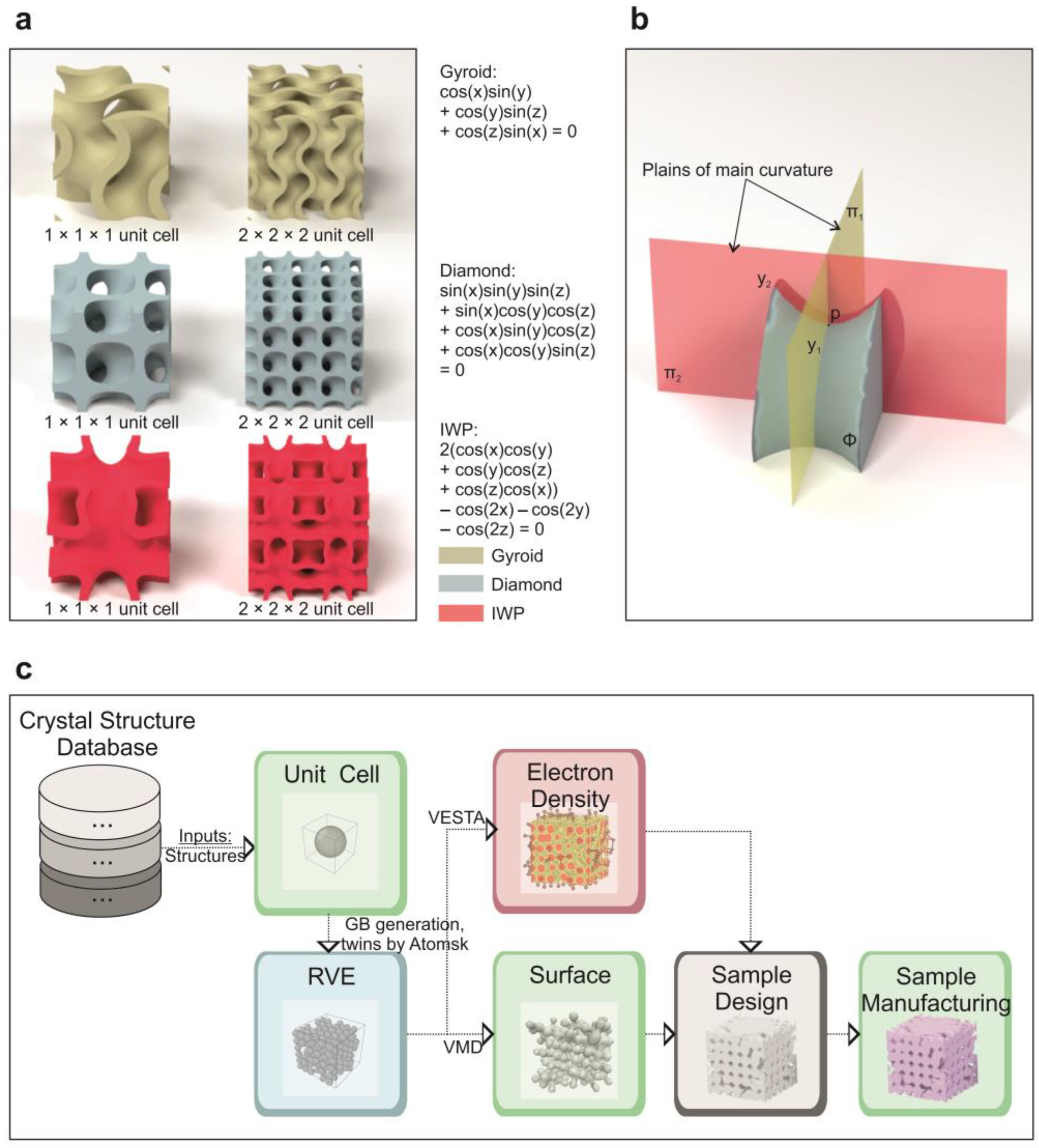Another interesting topic that I learned during my sabbatical in Russia is Metamaterials based on Triply periodic minimal surfaces. For metamaterials, their properties are dependent on their structure rather than on their chemistry.
Arsentev, M.; Topalov, E.; Balabanov, S.; Sysoev, E.; Shulga, I.; Akhmatnabiev, M.; Sychov, M.; Skorb, E.; Nosonovsky, M. Crystal-Inspired Cellular Metamaterials and Triply Periodic Minimal Surfaces. Biomimetics 2024, 9, 285. https://doi.org/10.3390/biomimetics9050285

Triply periodic minimal surfaces (TPMSs) have remarkable properties. They simultaneously have zero mean curvature at every point and a crystallographic group symmetry so that they form “cells”. Mathematicians have known such surfaces since the 1860s as pure geometrical objects, and they have discovered many new types of TPMSs since that time; however, simple methods to synthesize TPMSs became available only with the advent of additive manufacturing (3D-printing) technologies.

Photo credit: Wikimedia.
Since many properties of surfaces, such as wetting and stress concentration, depend on their mean curvature, it is anticipated that TPMSs may have properties different from those of regular porous materials. Moreover, since TPMSs minimize surface area and therefore the amount of material, it is also expected that they may provide optimized properties per unit weight, such as strength per density.
Most biomimetic materials and surfaces use living nature as an inspiration. However, natural crystals, while non-living, may also serve as a source of inspiration for new materials. This is because for many solid crystalline compounds, zero equipotential surfaces, electron density, and electron localization distribution functions take the form of TPMSs. Consequently, crystal-inspired materials can constitute a novel class of biomimetic materials. It is noted also that besides crystals, TPMSs are also found in living nature including butterfly wings, sea urchins, and biological membranes.
TPMS-based materials can be filled with a matrix material, either liquid and solid, making them a composite material with self-lubricating or self-healing properties, similar to SLIPs (please see my 2011 paper in Nature). This is a novel and not-yet-explored area of research.
The number of publications dedicated to TPMSs in the Materials Science has grown steadily in the past ten years. I learned about these new materials during my sabbatical in Russia, and we prepared a review paper (now it is under consideration in a journal) together with colleagues from the ITMO University, Technological Institute in St. Petersburg and Institute of Silicate Chemistry.
Can we study such metamaterials in the US, in Wisconsin? What do we need for such studies to be the top in the world? As usually, we need some funding. Basic costs for a pilot program to 3D-print TPMS and to study their mechanical properties are not high. I have an excellent publication record, hundreds of articles in top journals, books in novel areas of materials science, and other credentials, so I expect that sponsoring agencies should be interested to fund such research.
If you are a program director of a governmental agency or a sponsor, private or industrial, who is interested to support such research in UWM, please contact me. I am aware of a difficult economic situation in Wisconsin, which unfortunately limits funding for universities and for research of novel technology due to structural budget deficits. Alternatively, I would be happy to work with foreign entities on such topics that can revolutionize metamaterials – whoever is interested and has money to be top in the world in science and wants to use my expertise.